FRTR Presents...Synthesizing Evolving Conceptual Site Models (CSMs) with Applicable Remediation Technologies
Sponsored by: Federal Remediation Technologies Roundtable (FRTR)
This webinar features presenters and material from the November 2019 FRTR Meeting held in Reston, VA. The session will include two presentations:
Developing Conceptual Site Models of Contaminated Fractured Rocks to Support In-Situ Remediation (Presented by USGS)
Conceptual site models (CSMs) were developed to support in-situ remediation of fractured sedimentary rocks contaminated with trichloroethene (TCE) in two areas at the former Naval Air Warfare Center (NAWC) site near Trenton NJ. The understanding of heterogeneity and groundwater flow represented in these CSMs is critical to designing remediation strategies that involve spreading injected amendments to contaminant locations. In one area at NAWC, hydraulic testing, tracer testing, and flow and transport modeling were conducted to develop a CSM for designing in-situ bioremediation of TCE, involving injection of emulsified vegetable oil and bacteria. The CSM showed that injection will spread amendments widely over a zone of lower-permeability fractures, with long residence times expected because of small velocities after injection and sorption of the oil onto solids. However, amendments transported out of this zone will be diluted by groundwater flux from other directions, limiting bioremediation effectiveness downgradient. In another area of the site, hydraulic tomography (HT) was conducted to develop a high-resolution hydrogeologic CSM that depicts the extreme heterogeneity of hydraulic properties. This CSM includes an estimate of the most-hydraulically-active fracture network, which is a key component of designing in-situ remediation because amendments are spread along this network during injection. Results of these studies emphasize that for in-situ remediation of heterogeneous flow systems such as fractured rocks, the extent of injected amendments cannot be conceptualized using simple homogeneous models. Instead, it is important to develop CSMs that use characterization data and modeling to represent the heterogeneous features and simulate the spatially variable groundwater fluxes that strongly control in-situ remediation effectiveness.
Using Remedy Implementation Information to Guide Remedy Optimization (Presented by PNNL, DOE, & EPA)
During groundwater remedy implementation, data and information are collected about remedy performance and the site contaminant and hydrogeology conditions. This information can be used to refine the conceptual site model and evaluate progress toward remedial action objectives. Consistent with recent guidance for adaptive site management, it is important to consider this information with respect to remedy optimization opportunities. Groundwater remediation of carbon tetrachloride at the Department of Energy Hanford Site has followed this approach and is currently conducting an optimization study using EPA's guidance on remediation optimization. The optimization study will evaluate changes to the treatment configuration and provide information to support future decisions to improve remedy protectiveness, effectiveness, and cost efficiency, and to facilitate progress toward completion of site work.
Upcoming FRTR Presents Series Webinars
FRTR Presents Series Archives
- FRTR Presents...Advancing Remediation: Lessons Learned and Innovative Approaches at Federal Facilities (Nov 17, 2025)
- FRTR Spring 2025 General Meeting: Innovative Approaches to Characterization and Survey of Complex Mixtures of Contaminants in Support of End-State Regulatory Compliance (Session 2 - Technologies) (May 14, 2025)
- FRTR Spring 2025 General Meeting: Innovative Approaches to Characterization and Survey of Complex Mixtures of Contaminants in Support of End-State Regulatory Compliance (Session 1 - Strategies) (May 13, 2025)
- FRTR Presents ... TRAC — A Tool for Tracking Groundwater Restoration Across Multiple Sites (Dec 4, 2024)
- FRTR Fall 2024 General Meeting: Source Differentiation and Risk Assessments for Sites Impacted by PFAS (Oct 29, 2024)
- FRTR Spring 2024 General Meeting: Artificial Intelligence and Machine Learning to Optimize Site Remediation (May 21, 2024)
- FRTR Presents...Recent Advances in PFAS Characterization Technologies (Feb 28, 2024)
- FRTR Fall 2023 General Meeting: Recent Advances in PFAS Characterization Technologies (Nov 7, 2023)
- FRTR Spring 2023 General Meeting: Best Practices and Recent Technical Advances in Site Characterization and Conceptual Site Model Development (May 16, 2023)
- Application of Robotics, Machine Learning and Artificial Intelligence Technologies to Site Remediation (Jun 13, 2022)
- Application of Robotics, Machine Learning and Artificial Intelligence Technologies to Site Remediation (Jun 6, 2022)
- FRTR Fall 2021 Meeting, Two Part Series on Remedy Protectiveness and Climate Resilience in Site Cleanups: Session 2 (Nov 15, 2021)
- FRTR Fall 2021 Meeting, Two Part Series on Remedy Protectiveness and Climate Resilience in Site Cleanups: Session 1 (Nov 8, 2021)
- FRTR at 30 Years: Grand Challenges and Opportunities for Advancing Remediation Technologies, Session 2 (May 26, 2021)
- FRTR at 30 Years: Grand Challenges and Opportunities for Advancing Remediation Technologies, Session 1 (May 19, 2021)
- FRTR at 30 Years: A Retrospective of Applied Innovative Technologies for Successful Site Remediation (Nov 18, 2020)
- FRTR Spring 2020 Meeting, Session 2: Bioremediation Advances - New Strategies, Optimization, and Performance Monitoring (Jun 5, 2020)
- FRTR Spring 2020 Meeting, Session 1: Bioremediation Advances - New Strategies, Optimization, and Performance Monitoring (May 29, 2020)
- FRTR Presents...Synthesizing Evolving Conceptual Site Models (CSMs) with Applicable Remediation Technologies (Apr 1, 2020)
- FRTR Presents...Modeling in Support of Site Remediation, Session 2 (Dec 4, 2019)
- FRTR Presents...Modeling in Support of Site Remediation, Session 1 (Nov 26, 2019)
- FRTR Presents...Per- and Polyfluoroalkyl Substances (PFAS) Emerging Characterization and Remedial Technologies, Session 2 (Sep 26, 2019)
- FRTR Presents...Per- and Polyfluoroalkyl Substances (PFAS) Emerging Characterization and Remedial Technologies, Session 1 (Jun 20, 2019)
- FRTR Presents...Evolution of Subsurface Remediation: Lessons Learned from Technical Challenges to Achieving Cleanup Goals - Part 2 (Oct 17, 2018)
- FRTR Presents...Evolution of Subsurface Remediation: Lessons Learned from Technical Challenges to Achieving Cleanup Goals - Part 1 (Sep 27, 2018)
- FRTR Presents...Remediation Technologies for Radionuclides and Heavy Metals in Soil, Ground Water and Sediments, Session 2 (Mar 28, 2018)
- FRTR Presents...Remediation Technologies for Radionuclides and Heavy Metals in Soil, Ground Water and Sediments, Session 1 (Feb 28, 2018)
- FRTR Presents...Heavy Metals-Mining Site Characterization and Treatment Session 3 (Aug 10, 2017)
- FRTR Presents...Heavy Metals-Mining Site Characterization and Treatment Session 2 (Jul 26, 2017)
- FRTR Presents...Heavy Metals-Mining Site Characterization and Treatment Session 1 (Jul 10, 2017)
- An Introduction to Green and Sustainable Remediation: What, Who, Why, and How (Jun 10, 2015)
- FRTR Presents: Large-Dilute Plumes: Challenges and Opportunities (May 1, 2013)
Accessibility, Recording, and Content Disclaimer
Rehabilitation Act Notice for Reasonable Accommodation
It is EPA's policy to make reasonable accommodation to persons with disabilities wishing to participate in the agency's programs and activities, pursuant to the Rehabilitation Act of 1973, 29 U.S.C. 791. Any request for accommodation should be made to at or , preferably one week or more in advance of the webinar, so that EPA will have sufficient time to process the request. EPA would welcome specific recommendations from requestors specifying the nature or type of accommodation needed. Please note that CLU-IN provides both alternate phone call-in options and closed captioning for all webinars, and requests for these specific accommodations are not necessary.
Webinar Recording
By participating in this CLU-IN webinar, you automatically agree to authorize recording of audio and visual content presented during this live event and consent to subsequent use of this recording in the public domain by the U.S. Environmental Protection Agency. This recording may include questions, comments and poll responses provided by you during the live event in addition to your name, voice, image or likeness. This recording will be made available after the conclusion of the live event as part of the CLU-IN webinar archives, and will remain available indefinitely. If you do not wish to consent to the recording, please do not join the live event, and contact Jean Balent at 202-566-0832 or balent.jean@epa.gov to discuss your concerns.
Content Disclaimer
This webinar is intended solely to provide information to the public. The views and opinions expressed as part of this webinar do not necessarily state or reflect those of the U.S. Environmental Protection Agency. It is not intended, nor can it be relied upon, to create any rights enforceable by any party in litigation with the United States, or to endorse the use of products or services provided by specific vendors. With respect to this webinar, neither the United States Government nor any of their employees, makes any warranty, express or implied, including the warranties of merchantability and fitness for a particular purpose, or assumes any legal liability or responsibility for the accuracy, completeness, or usefulness of any information, apparatus, product, or process disclosed, or represents that its use would not infringe privately owned rights.
Presenters:
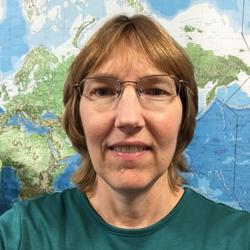 Claire Tiedeman, U.S. Geological Survey (tiedeman@usgs.gov or 650-439-2583)
Claire Tiedeman, U.S. Geological Survey (tiedeman@usgs.gov or 650-439-2583)
Claire Tiedeman has been a research hydrologist with the USGS since 1992. Her research is focused on developing and applying methods for characterizing and modeling groundwater flow and chemical transport in fractured rocks. This work has included field studies in crystalline rocks of New Hampshire and in sedimentary rocks of New Jersey at the former Naval Air Warfare Center (NAWC) site. She was co-coordinator of USGS research on contaminant fate, transport, and remediation at the NAWC site from 2005-2018. Claire's research has also addressed calibration and uncertainty analysis for models of complex groundwater flow systems, and she co-authored the textbook Effective Groundwater Model Calibration: With Analysis of Data, Sensitivities, Predictions, and Uncertainty (Hill and Tiedeman, 2007, John Wiley and Sons).
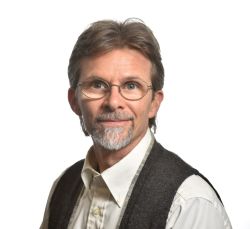 Mike Truex, Pacific Northwest National Laboratory (mj.truex@pnnl.gov or 509-371-7072)
Mike Truex, Pacific Northwest National Laboratory (mj.truex@pnnl.gov or 509-371-7072)
Michael Truex has 28 years of experience at Pacific Northwest National Laboratory in environmental remediation research and field applications. His experience includes work at Department of Energy, Department of Defense, and private remediation sites. Mike has authored technical guidance documents on remediation exit strategies, Monitored Natural Attenuation, vadose zone contaminant transport, and development of conceptual site models. Mike led chapter development and serves as a trainer for the ITRC 'Remediation Management of Complex Sites' document. He is also the chair for developing the International Atomic Energy Agency document entitled 'Determination of Environmental Remediation End States'.
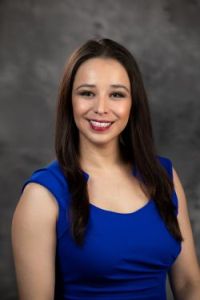 Emy Laija, EPA Federal Facilities Restoration and Reuse Office (Laija.emerald@Epa.gov or 202-845-3198)
Emy Laija, EPA Federal Facilities Restoration and Reuse Office (Laija.emerald@Epa.gov or 202-845-3198)
Emy Laija is an Environmental Scientist who works on Superfund cleanups of hazardous waste sites through the EPA Federal Facility Restoration and Reuse Office (FFRRO) in Washington, DC. Her position includes implementing national policy, promoting consistency in cleanups, developing training, and developing relationships with other federal agencies and stakeholders. Before working in FFRRO, Emerald worked as a Remedial Project Manager for 8 years in EPA's Hanford Project Office in Richland, WA and continues to serve as a Hanford subject matter expert. She earned a Master's Degree focused in Environmental Studies from University of Nevada-Las Vegas and a Bachelor's Degree from the University of Texas at El Paso.
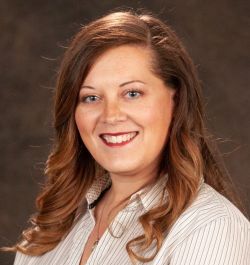 Kate Amrhein, U.S. Department of Energy Richland Operations Office (kate.amrhein@rl.doe.gov)
Kate Amrhein, U.S. Department of Energy Richland Operations Office (kate.amrhein@rl.doe.gov)
Kate Amrhein joined the Richland Operations Office (RL) in 2015 as a member of the Soil and Groundwater Division. She is a subject matter expert for the 200 West Pump and Treat, as well as for the 200-UP-1 and 200-ZP-1 Groundwater Operable Units. Prior to working at RL, Kate began her federal career at the Office of River Protection in 2014 as part of the Pathways Recent Graduate Program. She was a member of the One System Division, part of the Hanford Tank Waste Treatment and Immobilization Plant Start-Up, Commissioning and Integration group, working with flowchart and operational research modeling. Kate holds a Master's Degree in Geology from Kansas State University and a Bachelor's Degree in Geology from Grand Valley State University in Michigan.
Moderators:
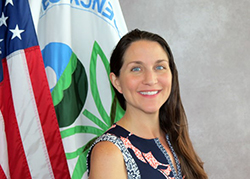 Jean Balent, U.S. EPA Technology Innovation and Field Services Division (balent.jean@epa.gov or 202-566-0832)
Jean Balent, U.S. EPA Technology Innovation and Field Services Division (balent.jean@epa.gov or 202-566-0832)
Ms Balent is on the staff of the EPA's Technology Innovation and Field Services Division where she has worked to collect and disseminate hazardous waste remediation and characterization information since 2003. Ms Balent manages the Clean Up Information Network website and actively supports online communication and collaboration resources available to EPA. She formerly worked with the US Army Corps of Engineers Environmental Engineering Division in the Buffalo District. Ms Balent was also a member of the SUNY-Buffalo Groundwater Research Group where she constructed and tested large scale models of groundwater flow. Ms Balent has also conducted research relating to the Great Lakes, environmental remediation, and brownfields re-development. She holds a Bachelor's degree in environmental engineering from SUNY-Buffalo and a Master's degree in Information Technology from AIU.
 Cindy Frickle, U.S. EPA Office of Superfund Remediation and Technology Innovation (frickle.cynthia@epa.gov or 202-566-0927)
Cindy Frickle, U.S. EPA Office of Superfund Remediation and Technology Innovation (frickle.cynthia@epa.gov or 202-566-0927)
Cindy Frickle is a physical scientist with EPA's Superfund program where she reviews and propagates technical information to site cleanup professionals through Clu-In, EPA forums, and interagency channels. Prior to joining EPA, she spent time characterizing contaminated sites, coring sediments, studying microbes, and teaching. She completed her Biogeology MS and Geology BS in the University of Minnesota's School of Earth Sciences.
Webinar Slides and References:
- These materials will be available by
Webinar Slides and References:
- These materials will be available by
Additional Resources:
Thank you for participating in our webinar. We would like to receive any feedback you might have that would make this service more valuable.
Help & FAQs
Adobe Connect Resources
This seminar will be delivered through Adobe® Connect™ with streaming audio delivered through your computer speakers or headphones. We strongly encourage you to test your computer or mobile app prior to attending this seminar using the links below. Technical support on the day of the seminar will be very limited and subject to significant delays.
- Adobe® Connect™ Meeting Connection Diagnostic & Troubleshooting Tips
- Adobe® Connect™ Mobile Apps
- Adobe® Connect™ Visual Quick Start Guide (754KB/2pp/PDF)
Rehabilitation Act Notice for Reasonable Accommodation
It is EPA's policy to make reasonable accommodation to persons with disabilities wishing to participate in the agency's programs and activities, pursuant to the Rehabilitation Act of 1973, 29 U.S.C. 791. Any request for accommodation should be made to at or , preferably one week or more in advance of the seminar, so that EPA will have sufficient time to process the request. EPA would welcome specific recommendations from requestors specifying the nature or type of accommodation needed, such as closed captioning.
with any additional questions
If you have a suggested topic or idea for a future CLU-IN internet seminar, please contact:
Technology Integration and Information Branch
PH: 202-566-0832 | Email: balent.jean@epa.gov
Technology Integration and Information Branch
PH: 202-566-0875 | Email: adam.michael@epa.gov




